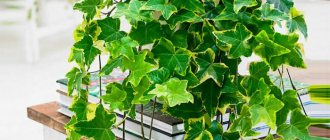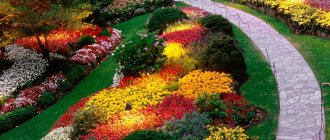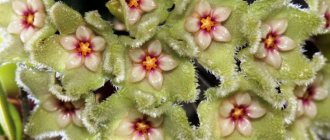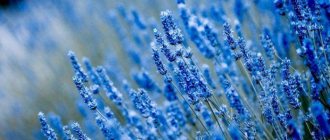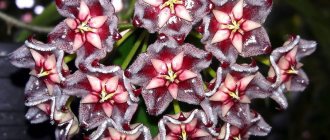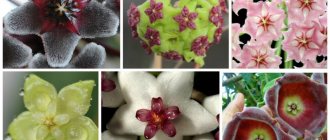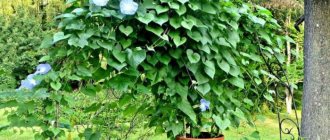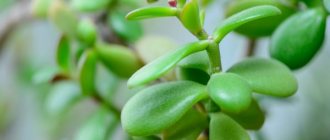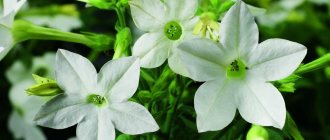Our distant ancestors also learned to grow ivy at home. This evergreen plant belongs to the Ampelaceae family, which has fascinatingly beautiful hanging vines. The flower is distinguished by thick, lush foliage, which gives a decorative appearance to the garden plot, an elite winter garden, creating coziness and aesthetics in the living room. It is readily chosen by dacha owners because the plant is unpretentious, care does not take much time, and it develops well on its own.
Popular types of ivy
Common ivy or Hedera, which means hanging plant, belongs to the Heder class. The homeland of lianas is the subtropics of the African continent. To make it easier for the plant to hold luxurious foliage, it easily entwines any support and is firmly held on it. This ability is used for decorative purposes, creating supports in different configurations or braiding a vine onto the walls of a building, fences, or gazebos.
If you control the development of ivy and provide appropriate care, it will help create an original, stylish interior. The main, commonly found types of ivy:
- the common loach quickly clings to everything that is nearby;
- the Lise variety is popular among gardeners due to the bright, unusual color of its large palmate leaves;
- Canary ivy is distinguished by variegated leaves of a dense structure.
Medicinal properties
Hedera helix mix or common ivy - home care
In addition to its evergreen crown, ivy has medicinal properties, which have been proven by scientists. Along with the benefits, we must not forget that it also contains toxic compounds. But despite this, you should not be afraid of this plant. Many medicines have been developed using components from this plant. Beekeepers note its high honey production.
Ivy pollen honey
Medicines with ivy components have expectorant, antibacterial properties, and are also used in wound healing. Herbal medicine recommends ivy as a means to improve immunity. The benefits of ivy infusion in improving the functioning of the liver, gall bladder, and gout have long been proven.
People use ivy to remove warts and calluses. They treat boils and purulent wounds. The most interesting thing is that with the help of this climbing bush you can fight baldness. Infusions from the leaves provoke the restoration of hair follicles.
Thus, common ivy can delight not only with its evergreen beauty, but also with many medicinal properties. In addition, a vine, gifted with proper care, will decorate any garden. And the honey that is obtained after collecting pollen is quite rare and very healthy.
Proper ivy care
Despite its beauty, experts consider ivy to be a poisonous plant. Touching it with exposed skin can cause irritation and illness. In this regard, it is necessary to isolate children and living creatures from it, placing the flower away from them. Caring for it requires caution. Wearing gloves can prevent skin damage. In folk medicine it is used for medicinal purposes. Decoctions from the plant are useful for coughs, bronchitis, and asthma. After planting, ivy flowering can be observed after 10 years. When berries appear, they are removed.
In the summer, when temperatures are above 20°, the pot is switched to outdoor mode, where there is a lot of air and space. In winter, the room where the flower grows should be humid and cool, the norm for it is + 12 °C.
If ivy is kept indoors, it should be located in a place where its leaves will be protected from direct sunlight. The plant needs to be watered according to the season. In summer, the crop needs moderate but regular watering so that the soil always remains moist. Two waterings per week will be enough. In cold weather, the procedure should be carried out rarely, as needed.
Flower growing experts advise constantly maintaining humidity by spraying the plant. To do this, you can use a cool shower or soft, settled water. The decorative appearance of the leaves can be preserved by wiping with a regular soft cloth or buying a polish intended for flowers.
Recommended species and varieties
N. algeriensis (syn. N. canadensis hort.) (P. algerian, P. canary)
The leaves are green or dark green, up to 15 cm long; on hanging shoots they have 3-5 lobes; on long vertically climbing shoots the leaves become heart-shaped. They are often covered with reddish hairs on the lower surface and leaf petioles. Keep these indoor plants away from cold drafts as they may lose their leaves. Usually grown as a hanging plant in hanging baskets. The height and diameter of the plant is 6x5 m (5 years).
Leaves are green or dark green
"Gloire de Marengo"
Very variegated light green leaves with yellow and cream spots.
Very variegated light green leaves
"Marginomaculata"
The variety produces leaves with dark and light green irregular zones and sometimes cream or white edges.
"Marginomaculata"
"Ravensholst"
Often used as a ground cover, the variety has shiny green leaves.
"Ravensholst"
N. canadensis hort
A large plant with lobed, oval, elliptical or heart-shaped leaves up to 20 cm long. The leaves are dark green, thick and leathery, and release a strong aroma when crushed. The lower surface of young leaves has reddish pubescence. In cold weather the leaves turn bronze. Homeland - Caucasus. It is a completely cold-resistant species; it overwinters under snow without shelter, although in some years it may lose leaves. The height and diameter of the plant is 10x5 m (5 years, in warm climates).
Large plant with lobed, oval, elliptical or heart-shaped leaves
"Dentata"
The variety has slightly larger leaves of a soft green color with sparse teeth along the edges.
"Dentata"
"Dentata Variegata" (syn. "Dentata Aurea")
A wonderful plant with green leaves with a grayish tint. Young leaves have creamy yellow edges that turn creamy white as the leaves age.
Leaves with a grayish tint
"Sulfur Heart" (syn. "Paddy's Pride")
The variety bears leaves with distinct yellow and light green spots. Some leaves are almost entirely yellow. The winter hardiness of varieties has not been studied enough.
The variety bears leaves with distinct yellow spots
N. helix (P. vulgare)
The leaves are dark green or green, red in cold weather, up to 15 cm long, 3-5 lobed. It is one of the most adaptable garden plants and is widely grown outdoors as a ground cover. As a vine, ivy can only grow in warm climates. Variegated varieties are suitable for pot culture. The height and diameter of the plant is 10x5 m (5 years, in warm climates).
Mostly natural varieties of ivy are suitable for growing in open ground in the middle zone. Varieties, as a rule, are less winter-hardy and can only be used as plants for the winter garden.
"Adam"
Small light green leaves, no more than 5 cm long, with silvery edges. The variety is less winter-hardy than most other varieties; in severe winters, plants lose leaves, but quickly recover. Reaches 1.2 m in height.
"Adam"
Angularis Aurea
Shiny light green leaves up to 7.5 cm long with bright yellow spots. The plant is not suitable for growing as a ground cover. Reaches 4 m in height.
Leaves up to 7.5 cm long
"Atropurpurea"
The variety has leaves up to 7.5 cm long, whole or with two small lobes, dark purple in winter with bright green veins. Grows up to 4 m tall.
"Atropurpurea"
"Buttercup"
In full sun it has bright yellow leaves about 4 cm long. Grows up to 2 m tall.
"Buttercup"
"Caecilia"
The variety produces creamy yellow and green leaves up to 5 cm long. Grows up to 1.2 m tall.
"Cavendishii"
Green, three-lobed leaves up to 7.5 cm long with gray spots and creamy white edges. Grows up to 1.2 m tall.
Green three-lobed leaves
"Chicago"
A variety with green leaves up to 3 cm long with lighter veins (up to 3 m tall).
"Chicago"
"Congesta"
A slow growing, tough, erect plant with small, dark green, arrow-shaped leaves up to 2.5 cm long. Although the plant is not a climber, it grows best against a wall, fence or large rock in a rocky garden. Grows up to 1 m tall.
Slow growing tough upright plant
"Congio-merata"
The plant, which has a dense bush-like form, is ideal for a rocky garden. Its stiff, straight stems bear dark green wavy leaves up to 2.5 cm long. Grows up to 1 m tall.
Bush form
"Dragon Claw"
Gray-green leaves with wavy edges up to 7.5 cm long. It is best used as a ground cover plant. Grows up to 2 m.
Gray-green leaves
"Duckfoot"
An excellent ground cover plant with three-lobed leaves up to 2 cm long, the color of green peas. Grows up to 1 m.
ground cover plant
"Erecta"
A slow growing plant with rigid, straight branches and three-lobed, arrow-shaped leaves up to 2.5 cm long. Grows up to 1 m tall.
Slow growing plant with stiff, straight branches
"Gold-child"
A popular houseplant, it has bright green leaves up to 7.5 cm long with a light green center and wide golden yellow edges. Leaves that reach maturity are blue-green to gray-green with creamy yellow edges. Grows up to 1.2 m tall.
Popular houseplant
"Goldstern"
The variety produces lobed leaves up to 5 cm long, lime green in color with a dark green spot in the center. Grows up to 1.2 m tall.
Lobed leaves
"Green Ripple"
The variety has green leaves up to 7.5 cm long with prominent veins and wavy edges. This excellent groundcover is a creeper rather than a climber. Grows up to 1.2 m tall.
"Green Ripple"
"Harald"
Green and gray-green five-lobed leaves with creamy white edges. Grows up to 1.2 m tall.
Green and gray-green five-lobed leaves with creamy white edges
N. helix ssp. hibemica
A very good ground cover plant with five-lobed, wavy, shiny green leaves up to 7.5 cm long. Grows up to 1.2 m tall.
N. helix ssp. hibemica
"Jubilee"
A densely branched plant with variegated gray-green-white leaves up to 4 cm long. Grows up to 1 m tall.
Densely branched plant
"Kolibri"
The variety bears variegated leaves up to 5 cm long with numerous white spots on a green background. Grows up to 1 m tall.
"Kolibri"
"Konigers Auslese"
The owner of arrow-shaped green leaves up to 7.5 cm long. Grows up to 1.5 cm tall.
Green leaves
"Little Diamond"
A densely branched plant, it has variegated leaves up to 5 cm long with silvery spots, reminiscent of diamonds, on a gray background. The maximum height of the plant is about 60 cm.
Densely branched plant
"Manda's Crested"
The variety bears green leaves with wavy edges up to 7.5 cm long; in autumn they turn copper color. Grows up to 2 m tall.
Green leaves with wavy edges
"Melanie"
The variety has green corrugated leaves with a reddish tint. Grows up to 2 m tall.
"Midas Touch"
A very slow growing variety with heart-shaped golden leaves up to 5 cm long. Grows up to 1 m tall.
"Midas Touch"
"Minor Marmorata"
Small five-lobed leaves, rarely reaching a length of more than 4 cm, are dark green, with gray and white specks and spots. When it gets colder, the leaves turn pink. They grow up to 2 m tall. In cold climates up to 1 m tall.
Small five-lobed leaves
"Ogo di Bogliasco" (syn. "Goldheart")
The variety bears green leaves up to 5 cm long with yellow spots of irregular shape. Grows up to 1.2 m tall.
"Ogo di Bogliasco"
"Parsley Crested"
The variety produces light green leaves up to 7.5 cm long with corrugated and combed edges. Not suitable for growing as a ground cover plant. Grows up to 2 m tall.
Light green leaves
"Pedata"
The variety bears deeply lobed gray-green leaves up to 5 cm long with a longer central lobe. Grows up to 4 m tall.
Deep lobed gray-green leaves
"Sagittifolia"
Deeply dissected leaves up to 5 cm long. Grows up to 1.2 m tall.
Deeply dissected leaves up to 5 cm long
"Sagittifolia Variegata"
The variety produces deeply dissected creamy-white-green variegated leaves up to 4 cm long. Grows up to 1 m tall.
Creamy white and green variegated leaves
"Shamrock"
A popular ground cover plant with dark green leaves up to 2.5 cm long, which appear on stems with short internodes. Grows up to 60 cm tall.
Popular ground cover plant
"Spetchley"
Miniature ivy with tiny dark green arrow-shaped leaves up to 2.5 cm long, suitable for rocky gardens. Grows up to 30 cm tall.
Miniature ivy
"Tres Coupe"
The variety has wide, arrow-shaped, deeply dissected dark green leaves up to 4 cm long. Grows up to 1 m tall.
Arrow-shaped, deeply dissected dark green leaves
"Tricolor"
The variety produces almost triangular greyish-green leaves about 5 cm long with light grey-green or cream veins and white or pink edges in winter. A beautiful climbing plant up to 2 m tall.
"Triton"
A spreading ground cover plant with deeply dissected dark green leaves up to 7.5 cm long. Grows up to 45 cm in height.
Triton
N. hibemica (syn. J. helix ssp. hibernica) (P. Irish, P. Atlantic)
A large climbing plant that is well suited for growing as a ground cover. The leaves are green, up to 15 cm long, almost heart-shaped. The height and diameter of the plant is 7x5 m.
"Ann Marie"
The leaves are bright green, with golden-cream spots, up to 12.5 cm long. Grows up to 5 m tall.
"Ann Marie"
"Deitoidea"
A compact plant with wide-hearted, dark green leaves up to 10 cm long, which turn purple in winter. Grows to a maximum height of 5 m.
Compact plant with broad-hearted dark green leaves up to 10 cm long
Reproduction and transplantation of ivy
Before planting indoor ivy, you need to prepare a mixture favorable for growth, which will include:
- 2 parts leaf humus;
- 2 parts turf soil;
- 1 - sifted sand.
The ivy pot must be selected in accordance with the requirements of sufficient width and shallow depth. Replanting should be done in the spring, when young root shoots break through the holes in the bottom. The first layer of drainage is placed in the flowerpot, then the prepared soil mixture is poured. The ivy plant, like any plant crop, needs feeding. The best option for fertilizing it is a mineral complex for indoor deciduous flowers. To prevent the leaves from growing too large under the influence of such procedures, you need to fertilize the soil in moderation.
The flower is propagated by various methods:
- shoots, immersing them in the ground located in the pot where the mother plant grows.
- cuttings, planting them at a thermometer reading of +23°.
- separation of ivy shoots, and subsequent rooting into the ground.
Ivy in landscape design
Traditionally, in landscape design, ivy is used as a small, fast-growing vine, but it is no less effective as a ground cover crop. Moreover, the use does not have to be classic: vertical gardening, with enough imagination, can be unusual and even extravagant. Thanks to their talent for clinging even to smooth, rough surfaces with the help of invisible roots, ivy can climb anywhere.
For example, if you install a regular wooden trellis against a light-colored wall and, instead of a solid texture, you wrap twigs around the lattice slats, you will get a fancy pattern of green checks or diamonds. And a series of arches, squares or triangles over the path, thanks to the ivy that covers the supports, as an alternative to the usual massive green hedges, can become an elegant decoration of the garden. Of course, sometimes you will have to resort to cutting, but ivy tolerates it very well.
It is considered increasingly fashionable today to create original living frames around windows and doors, and even to imitate framed passages in the wall, allowing you to create optical illusions. As a ground cover, ivy will even help to hide communications, for example, near a fountain or pond, disguising pipes and other unattractive parts under luxurious greenery.
Ivy plants look great in flowerpots on plinths or stone bowls, allowing you to fill them with a plant that will play its role even in winter. Varieties with small lacy leaves, such as Minima, look great in mini flower beds and borders. Ivy with the brightest patterned leaves brings the effect of inner glow to shady corners, enlivening even the most boring design elements, and to potted gardens, the design of window sills, balconies and terraces - the splendor of openwork lush greenery, highlighting the beauty of summer gardens with a bright lush background.
Ivy can be used to form a green sculpture of any shape. This is a great alternative to classic topiary topiary shrubs. At the same time, creating “cut” masterpieces will require significantly less effort and time. In fact, you don’t even have to cut the ivy. Sculptures are created from potted ivy by anchoring the base of any wire frame - a ring, a ball or a complex sculpture - into the soil of the pot next to the plant.
The shoots are carefully distributed on all sides of the frame, braided with wire and, if necessary, tied with soft twine.
As the ivy grows, it is directed to the “missed” places and thus forms the entire figure completely. All that is necessary for such a sculpture to serve as a decoration for your garden for many years is to tie up the side shoots and provide the plant with proper care. In contact with
Causes and consequences of ivy disease
Ivy is susceptible to all the ailments characteristic of vegetation. It suffers from illnesses and suffers from attacks by pests, which have a detrimental effect on it, as on every indoor plant. When growing ivy, you can prevent diseases by knowing their causes and obvious signs. More often the plant suffers if:
- watering is carried out frequently, the leaves of the flower turn yellow and fall off;
- low humidity levels are allowed, the leaves become limp and dry;
- the room is not light enough, the leaves do not have enough light, they die;
- the plant is growing slowly - it’s time to fertilize the soil.
In the photo of ivy you can see how harmful insect pests affect the plant:
- thrips;
- scale insect;
- aphid;
- spider mite
If you plant and care for ivy responsibly, it will delight you for a long time with its magnificent decorative appearance, luxurious green palmate leaves, and their vibrant shine.
Controversial plant
While ivy is undoubtedly a wonderful plant to form dense carpets or green walls, its aggressive spread has put many off. There are those who consider ivy to be a weed that needs to be eradicated because it is harmful to buildings and the environment. There is some truth in this, since it is a highly invasive species, very resistant to external influences, undemanding to soil composition and capable of choking out weaker plants. But with controlled growth and regular pruning, it can be grown quite well. It does not form rhizomes and does not grow from underground lateral roots. Therefore, it is enough to trim the length of the shoots so that they do not grow too much, and you can safely admire the charm of their leathery green leaves all year round.
Photo of ivy
Why is ivy removed from the walls of buildings?
From an aesthetic point of view, ivy is a beautiful addition to the home. However, if not taken care of properly, it can also become his curse. Neglecting this plant on the facade can lead to:
1. Destruction of walls - due to the emerging ecosystem and the mosses and algae contained in it. And if the plant nests in a gutter, a real tree can grow there. This is due to the lack of water drainage (the drainage system is clogged with ivy) and ideal conditions for the development of seeds carried by the wind or birds. When the tree, in turn, begins to grow, its root system can completely destroy the wall.
2. Many living organisms settle inside the plant, for example, mosquitoes and snails, attracted by ideal living conditions.
